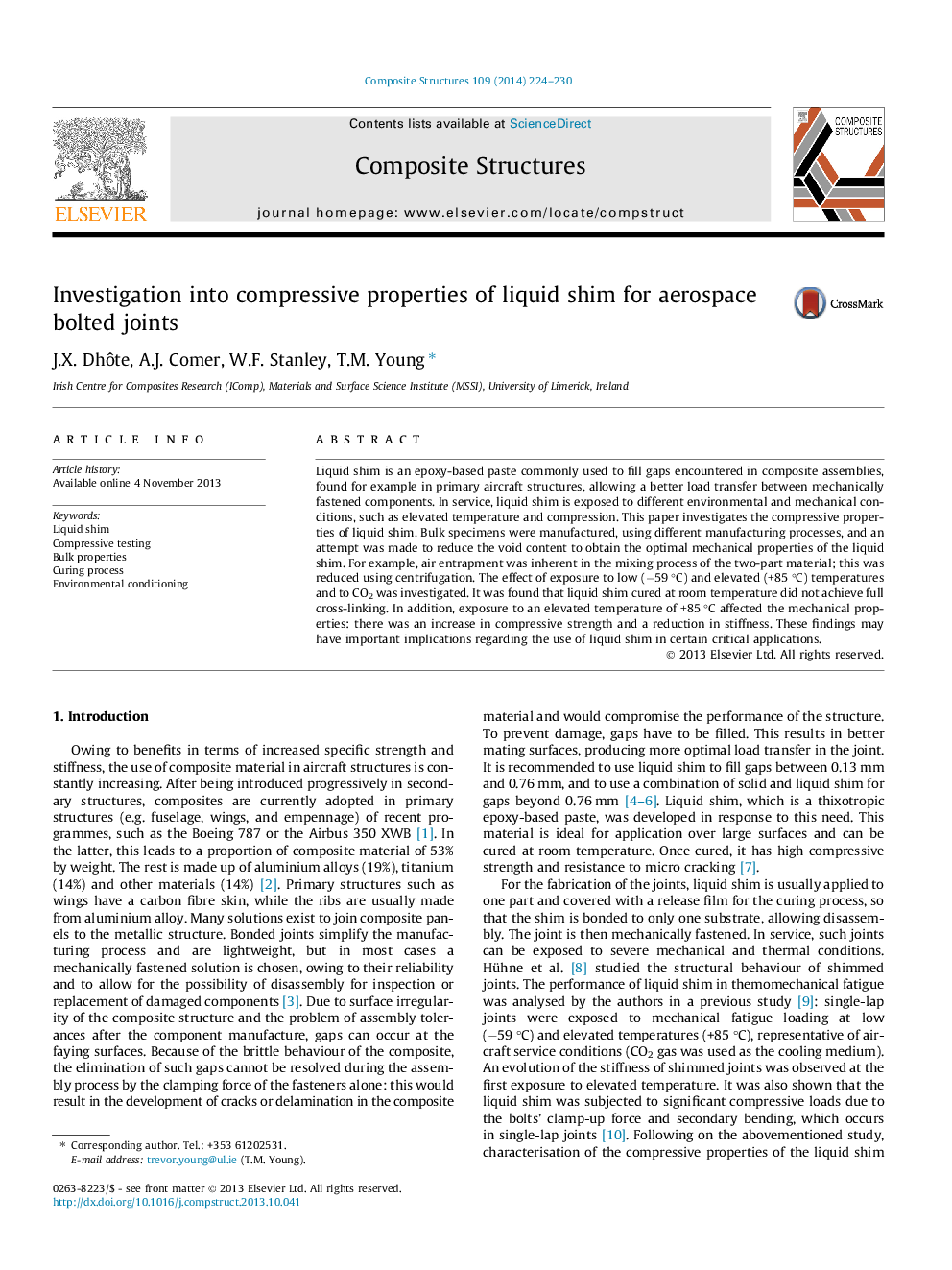| Article ID | Journal | Published Year | Pages | File Type |
|---|---|---|---|---|
| 6708283 | Composite Structures | 2014 | 7 Pages |
Abstract
Liquid shim is an epoxy-based paste commonly used to fill gaps encountered in composite assemblies, found for example in primary aircraft structures, allowing a better load transfer between mechanically fastened components. In service, liquid shim is exposed to different environmental and mechanical conditions, such as elevated temperature and compression. This paper investigates the compressive properties of liquid shim. Bulk specimens were manufactured, using different manufacturing processes, and an attempt was made to reduce the void content to obtain the optimal mechanical properties of the liquid shim. For example, air entrapment was inherent in the mixing process of the two-part material; this was reduced using centrifugation. The effect of exposure to low (â59 °C) and elevated (+85 °C) temperatures and to CO2 was investigated. It was found that liquid shim cured at room temperature did not achieve full cross-linking. In addition, exposure to an elevated temperature of +85 °C affected the mechanical properties: there was an increase in compressive strength and a reduction in stiffness. These findings may have important implications regarding the use of liquid shim in certain critical applications.
Related Topics
Physical Sciences and Engineering
Engineering
Civil and Structural Engineering
Authors
J.X. Dhôte, A.J. Comer, W.F. Stanley, T.M. Young,
